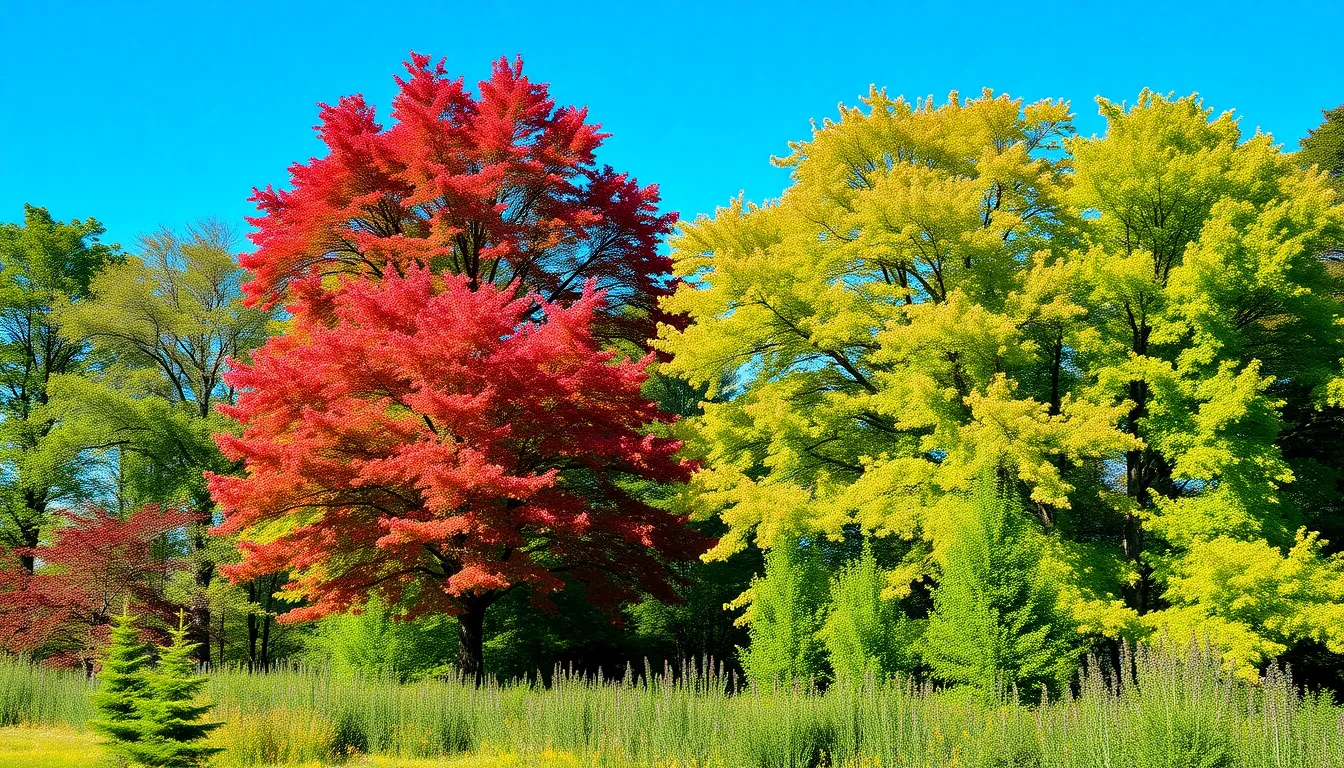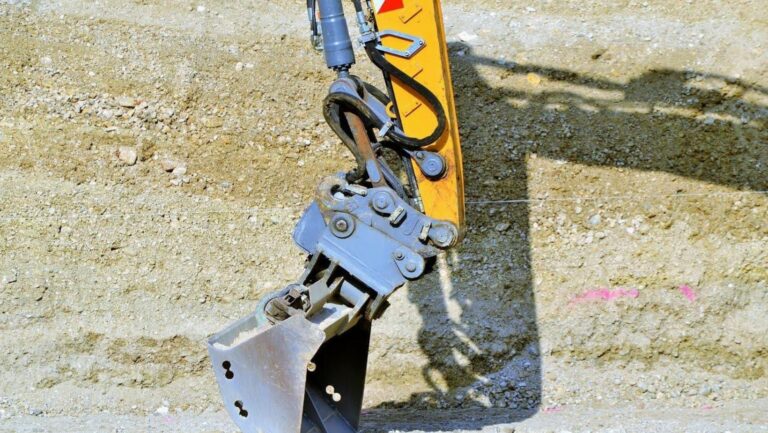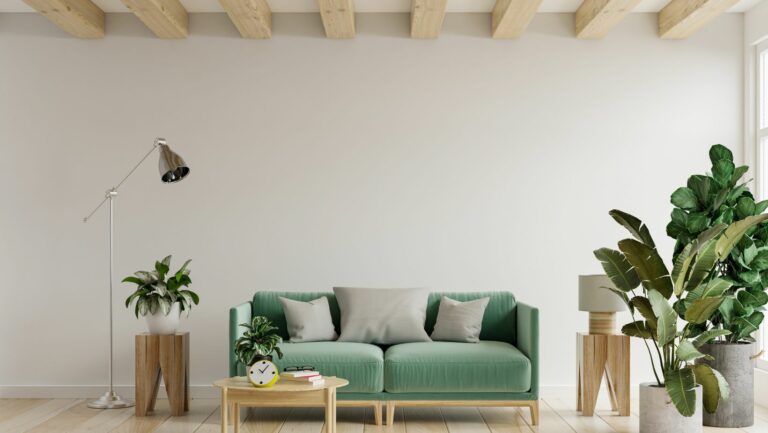Landscaping with trees transforms outdoor spaces, adding beauty and character while enhancing environmental benefits. Trees serve as natural focal points, providing shade, privacy, and a habitat for local wildlife. With the right selection and placement, they can elevate any landscape design, creating a harmonious balance between nature and architecture.
Choosing the right trees involves considering factors like climate, soil type, and intended use. From majestic oaks to delicate dogwoods, each tree brings its unique charm and advantages. Proper landscaping techniques not only ensure the trees thrive but also enhance the overall aesthetic of the property. Embracing trees in landscaping opens up endless possibilities for creativity and sustainability.
Table of Contents
ToggleBenefits Of Landscaping With Trees
Landscaping with trees offers numerous advantages, both environmentally and aesthetically. Trees contribute significantly to the ecosystem while enhancing the visual appeal of outdoor spaces.
Environmental Impact
Trees improve air quality by absorbing carbon dioxide and releasing oxygen. Studies show that one large tree can absorb approximately 48 pounds of carbon dioxide annually. Additionally, trees provide habitat for various wildlife species, supporting biodiversity. Moreover, trees reduce soil erosion by stabilizing the ground with their root systems, preventing runoff during heavy rains. Urban areas benefit from trees as they help moderate temperatures, reducing the heat island effect. According to the U.S. Forest Service, strategic tree placement can lower energy costs by up to 25% by providing shade.
Aesthetic Appeal
Trees enhance the landscape’s beauty by adding structure and variety. Different species, such as flowering cherry trees and evergreens, introduce color and texture throughout the seasons. A well-placed tree can create focal points, guiding the eye and enhancing design. Trees also provide privacy by acting as natural barriers, creating serene outdoor spaces that feel larger and more inviting. According to studies, properties with well-landscaped trees enjoy increased property values, often ranging from 7% to 19% higher than those without landscaping.
Choosing The Right Trees

Selecting the appropriate trees is vital for a successful landscaping project. Factors like native species and climate considerations significantly influence tree performance and longevity.
Native Species
Native species thrive in their local environments, ensuring better growth and resilience. They require less maintenance and water compared to non-native varieties. Incorporating native trees promotes local biodiversity, attracting native wildlife such as birds and pollinators. Examples include the Red Maple, which features vibrant fall colors, and the Oak, known for its durability and extensive root system. Choosing native species benefits both the landscape and the local ecosystem.
Climate Considerations
Climate plays a critical role in tree selection. Trees need to adapt to temperature, rainfall patterns, and humidity levels for optimal growth. Hardiness zones provide guidance on which species thrive in specific areas. For instance, species like Ponderosa Pine do well in drier climates, while Southern Magnolia flourishes in warmer, humid regions. It’s essential to choose trees that suit the local climate to ensure sustainability and health in landscaping.
Tree Placement Strategies
Effective tree placement enhances outdoor aesthetics and environmental benefits. Strategic positioning maximizes the impact of trees on a property.
Front Yard Design
Front yard tree placement focuses on drawing attention and creating an inviting atmosphere. Trees should enhance curb appeal while providing shade and beauty.
- Select large canopy trees, such as the Sugar Maple or the Red Oak, for shade and aesthetic value.
- Use smaller ornamental trees, like the Cherry Blossom, near entrances for visual interest and seasonal color.
- Position trees to frame views or accentuate architectural features, ensuring they complement the overall landscape design.
- Allow enough space for mature growth; trees require adequate distance from sidewalks and buildings to avoid structural issues.
Backyard Privacy
Backyard trees function as natural privacy screens, providing seclusion and tranquility. Strategic placement enhances privacy and creates a cozy retreat.
- Choose tall evergreen trees, such as Leyland Cypress or Eastern Red Cedar, which offer year-round privacy.
- Stagger tree planting in clusters to create a denser barrier, maximizing visual obstruction.
- Incorporate deciduous trees with dense foliage during the growing season to shield against outside views.
- Utilize a combination of tree heights and species for layered privacy, blending aesthetics with functionality.
Maintenance Considerations
Landscaping with trees involves several maintenance practices that ensure their health and longevity, including pruning techniques and seasonal care.
Pruning Techniques
Pruning is essential for maintaining tree health and enhancing appearance. Key techniques include:
- Removing Dead Wood: Eliminating dead or diseased branches promotes healthy growth.
- Thinning Canopy: Selectively removing branches improves air circulation and light penetration.
- Shaping Trees: Modifying tree shape can enhance aesthetic appeal and prevent structural issues.
- Timing: Pruning during dormancy, typically late winter or early spring, minimizes stress on trees.
Each technique requires specific tools, such as hand pruners, loppers, and saws. Proper cuts should be made to prevent injury and allow for proper healing.
Seasonal Care
Seasonal care optimizes tree health and growth throughout the year. Important care practices include:
- Spring: Fertilizing with a balanced fertilizer promotes new growth and enhances nutrient availability.
- Summer: Monitoring for pests and diseases, such as aphids and powdery mildew, ensures early intervention.
- Fall: Mulching around the base retains soil moisture and regulates temperature during colder months.
- Winter: Watering before ground freezes prevents stress and aids root health.
Additional considerations involve regularly inspecting trees for signs of stress and damage, ensuring timely response to maintain landscape beauty.
Landscaping with trees offers a wealth of benefits that go beyond mere aesthetics. By thoughtfully selecting and placing trees, individuals can create inviting outdoor spaces that enhance property value and promote environmental health. The right trees not only provide shade and privacy but also foster local biodiversity and improve air quality.
With proper maintenance and care, these natural features can thrive for generations. Embracing sustainable landscaping practices ensures that the beauty of trees is preserved while contributing positively to the ecosystem. Whether for a home or a public space, integrating trees into landscaping is a decision that pays off in numerous ways.



